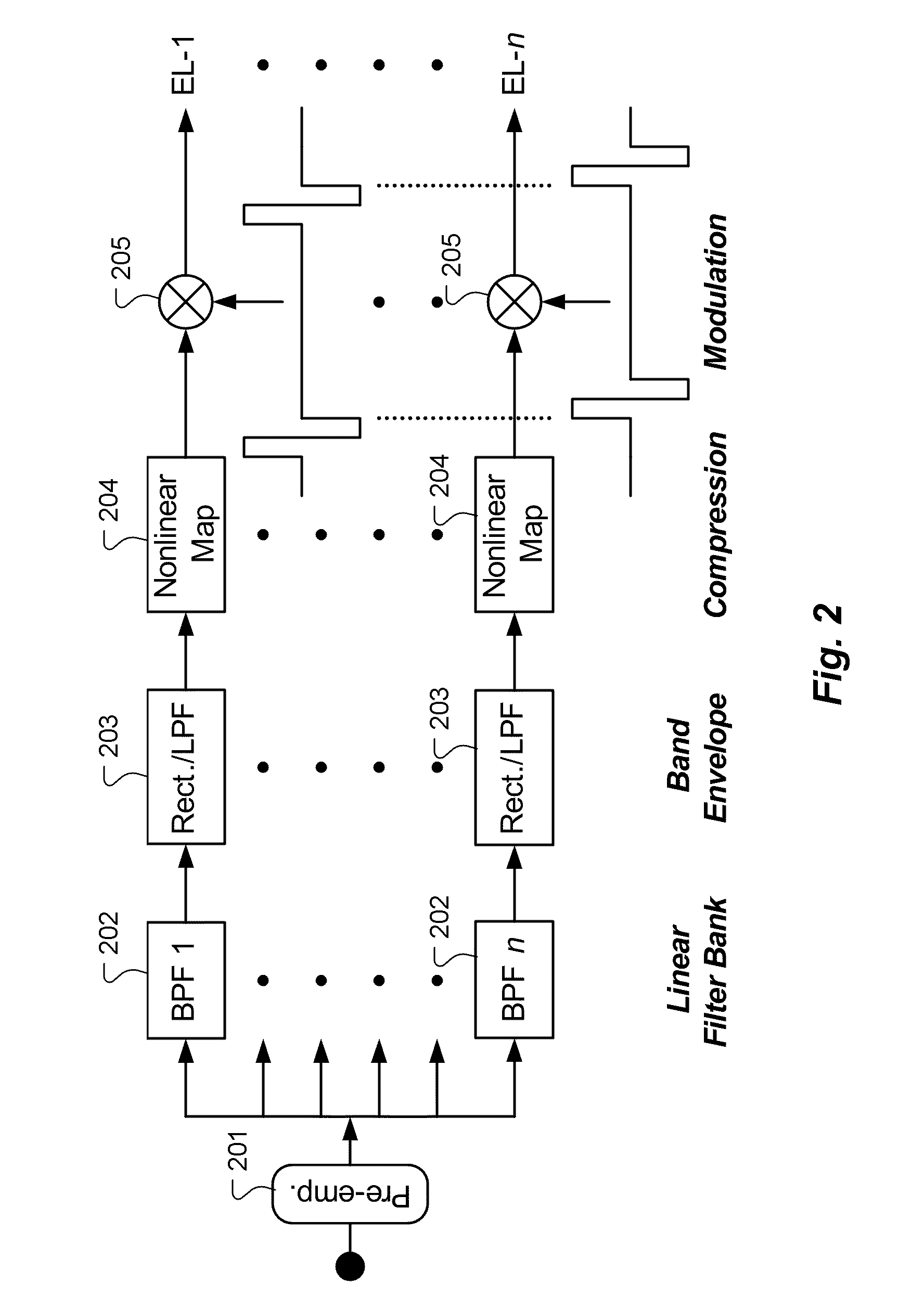Low Pulse Rate Cochlear Implant Stimulation In Conjunction With A Separate Representation Of Fundamental Frequencies And Voiced/Unvoiced Distinctions
a cochlear implant and pulse rate technology, applied in the field of medical implants, can solve problems such as impaired hearing, and achieve the effects of improved residual hearing, improved frequency audio, and low rate band-pass envelope characteristics
- Summary
- Abstract
- Description
- Claims
- Application Information
AI Technical Summary
Benefits of technology
Problems solved by technology
Method used
Image
Examples
Embodiment Construction
[0018]It would be useful for an auditory prosthesis to present electric stimulation pulses at very low rates for many or all of the signal channels and associated stimulation electrodes. That would reduce electrode interactions and improve modulation detection. Most of the information in speech, except for fundamental frequency and voicing information (voiced / unvoiced, or more broadly, periodic / aperiodic) is conveyed by signal modulations at and below about 16 Hz, for each of multiple frequency bands in the audible spectrum. For example, see Xu L, Zheng Y, “Spectral and Temporal Cues for Phoneme Recognition in Noise,” J. Acoust. Soc. Am., vol. 122, 1758-1764, 2007, which is incorporated herein by reference. Using the 4× oversampling rule (as described for example by Wilson B S, Finley C C, Lawson D T, Zerbi M, “Temporal Representations with Cochlear Implants,” Am. J. Otol., vol. 18, S30-S34, 1997; incorporated herein by reference), this means that pulse rates theoretically could be ...
PUM
 Login to View More
Login to View More Abstract
Description
Claims
Application Information
 Login to View More
Login to View More - R&D
- Intellectual Property
- Life Sciences
- Materials
- Tech Scout
- Unparalleled Data Quality
- Higher Quality Content
- 60% Fewer Hallucinations
Browse by: Latest US Patents, China's latest patents, Technical Efficacy Thesaurus, Application Domain, Technology Topic, Popular Technical Reports.
© 2025 PatSnap. All rights reserved.Legal|Privacy policy|Modern Slavery Act Transparency Statement|Sitemap|About US| Contact US: help@patsnap.com



